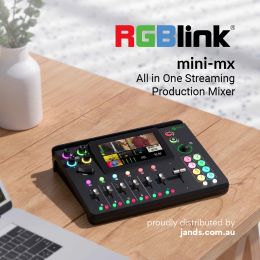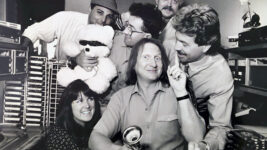News
16 Sep 2015

LISTEN HERE: RANTING, RAVING & MONEY WORTH SAVING
Subscribe to CX E-News
When it comes to audio production, one thing is certain; there are no rules.
And for that we can thank people like Geoff Emerick of Beatles fame (amongst others). He used to break rules on a daily basis: put mics close to drum kits, feed line-level signals back into mic preamps, man-handle spools while the analogue tape machine was running and (heaven help us all) distort tape! Back then these processes almost cost him his job at Abbey Road. Now that studio trades off his ‘anarchic tendencies’ to the tune of millions!
So why do so many ‘industry types’ peddle so many rules even still? Every time I go to a trade show you’d think we were back in the 1960s… rules: the last bastion of the sales pitch.
Instruments all sound different, voices all sound different, people’s sonic tastes are all different, music evolves and devolves with fashion trends, as does technology, and nothing ever stays the same for long.
With that in mind, here are five things that really get my goat when I find myself talking to people ‘in the industry’ who sell their wares to end-users.
1: THE FLAT MIC THEORY
Why oh why do so many microphone manufacturers feel obliged to promote their latest product as always being better sounding than anything ever made, and (typically falsely) that their new mic has a ‘flat’ response?
Frankly, I’m utterly sick of hearing about Microphone X being ‘flat’ and ‘true’. It’s generally misleading and irrelevant anyway for one simple reason: sound sources are as wide and varied as stars in the sky. Every sound has its own sonic footprint, its own musical and/or environmental context and no two people ever agree on how any of these sounds should be captured.
In other words, no one mic could ever be expected to suit every purpose, tone or context because every recording is different – some radically so.
So why on earth do manufacturers think customers care about ‘flatness’ over and above every other characteristic? Have they never recorded a blindingly shrill vocalist before that needed serious taming, a dull bass that was crying out for detail, or a harsh electric guitar that needed an extended bottom end and a more merciful midrange response? Have they never recorded in a harsh room or placed mics in front of imperfect instruments?
What is ‘flatness’ anyway, and what does a ‘flat’ mic sound like? Frankly, I don’t know a single engineer worth his or her salt who’s preoccupied with ‘flatness’ during a recording session. In fact, generally the exact opposite holds true.
Most engineers choose mics that bring out the best in a sound, focus in on one aspect of its tone, or modify a sound’s frequency response to suit the wider musical or environmental context. More importantly, most engineers know that if you put 10 so-called ‘flat’ mics in front of a common sound source they’d all capture something different anyway.
Variety is what engineers, musicians and producers want, not some theoretical ideal. But of course microphone manufacturers already know this. That’s why they often have dozens of microphones in their range, not just one! So please, let’s dispense with promoting the ‘flat’ mic theory as if we’re all thick, and ditch the defensive outbursts when someone says a microphone sounds great on X but not Y.
2: MY PRODUCT IS GOOD, THEIRS IS BAD
I’d like a dollar for every time someone in the industry has ‘confided’ in me that their rival’s latest speaker design sounds terrible but theirs is brilliant, or that the latest compressor designed by Jonny X is crap because his company now manufactures in China.
What, am I a fool? Am I really expected to agree with these types of assertions when they’re almost always based on hearsay and rumour mongering? I’ve been in this game far too long to accept this drivel, and know from experience that concepts like ‘good’ and ‘bad’ are best left to conversations about ethics, not audio equipment.
Of course, there are times when something can be described as being ‘faulty’, ‘unreliable’ or ‘inappropriate’ – like when an A/D converter catches fire in the middle of a take. At that point I’d be the first person to throw mud.
But to assert that something always sounds ‘bad’ no matter what the context or circumstance is to misunderstand what audio production is often about. Sometimes the very worst sounding products are the very best solution in a particular context. Some of the cheapest instruments, the most distorted microphones, the noisiest and dullest compressors are the best sounding ingredient for a specific purpose.
So please… don’t tell me that something sounds crap when you haven’t even heard it, let alone used it. There’s nothing worse than someone who bitches and moans about a product they don’t sell or use. It always makes me think just one thing: what would they say if they sold it themselves?
3: WARMTH… AS IN TEMPERATURE?
For whatever reason – boredom perhaps, or just plain laziness – whenever I’m at a trade show it seems there’s one adjective hoisted up the flagpole with monotonous regularity by manufacturers and salespeople alike – ‘warmth’.
If, while talking to someone about their new audio device, this dreaded word escapes their mouth during the banter, I shrivel like a snail doused in salt.
Seriously, are we still happy to trot this adjective out every time we want to garner respect for a product? Can someone please rescue me with a skyhook next time so I don’t have to endure another conversation about ‘warmth’?
I sometimes dream of having a magic ring, a-la Bilbo Baggins, that I can slip on the moment someone uses this word in an audio conversation on a tradeshow floor.
“Yeah Andy, you should hear this new valve compressor. It’s the great cure-all for digital recording… it’s just amazing how much warmth it…”
Shhrrrrowpt. Gone!
4: MUSIC HAS GONE TO THE DOGS
This one really amazes me when I hear it voiced.
Somewhat incredibly, there are many in the industry who genuinely believe that there’s no good music being created in the here and now.
This sort of assertion really blows my mind. When I think of all the incredible stuff being made every year by some truly remarkable performers, the very notion that there’s “nothing worth listening to” out there really astounds me.
I really can’t understand what drives people – who profess to love music – to make such ignorant and flagrantly stupid comments really, but sure as night follows day, the next time I’m at a tradeshow someone will trot it out.
It’s like saying there are no good films made any more, or that cars are all crap now since computers got involved in their manufacture. It’s just plain nonsense spouted from the mouths of those who have long since – for whatever reason – stopped discovering new music.
5: IT SOUNDS LIKE THE ORIGINAL
There have been some truly amazing pieces of equipment manufactured over the years, some of them well deserving of their near-mythical reputations.
And while I have heard new products occasionally sound remarkably like an ‘original’ device they claim to replicate, most gear made these days that’s marketed as having a ‘classic’ pedigree doesn’t come within a bull’s roar of the original.
I know this isn’t really news to anyone, but I really hate this sort of behaviour. To these manufacturers I would simply say this: if you can’t design your own products but instead feel comfortable stealing the designs and reputations of others, passing them off as your own work, don’t expect any respect from your peers.
Often there’s very little behind these companies other than familiar looking knobs and the occasional distant relation.
But in the end it’s the relevance of these assertions that engineers, both young and old, must continuously question. A new product copying the design of an old one isn’t new or remarkable or even relevant these days.
In the end a product that harks back to a classic design of yore might have some similarities, but in the end the only judge is you and your ear.
But we all know that, don’t we.
Subscribe
Published monthly since 1991, our famous AV industry magazine is free for download or pay for print. Subscribers also receive CX News, our free weekly email with the latest industry news and jobs.











